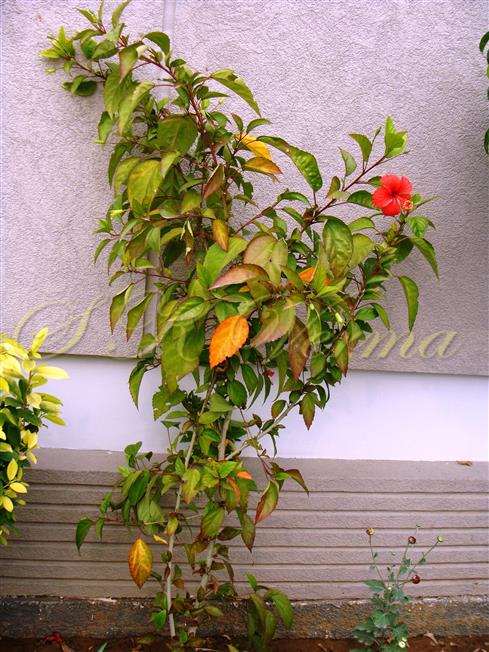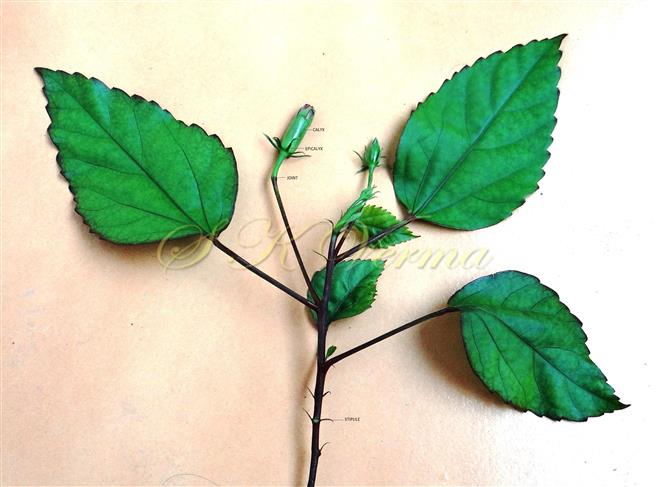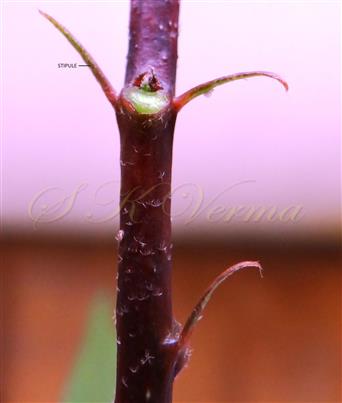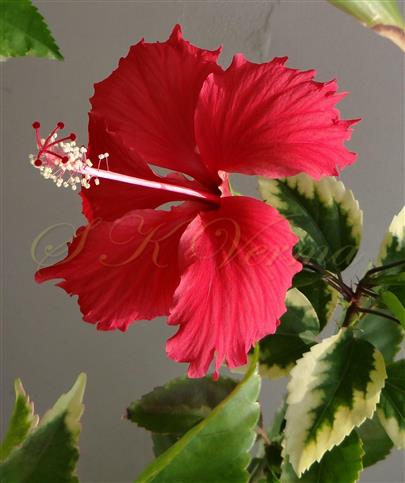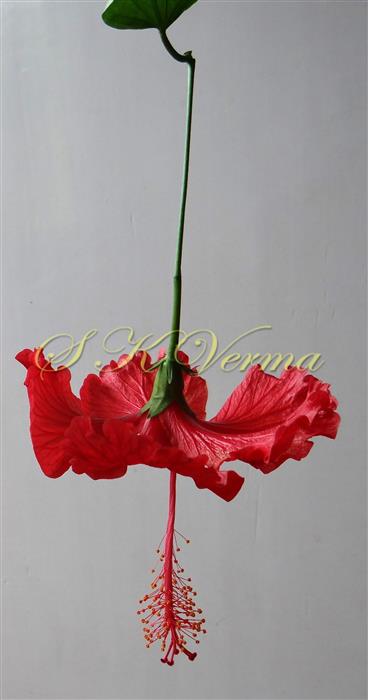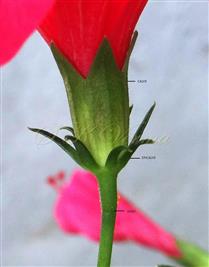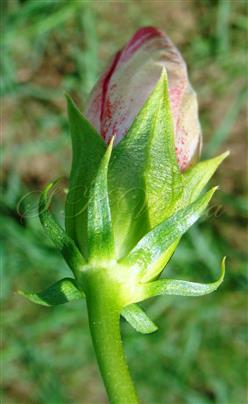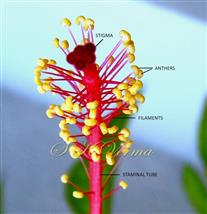HIBISCUS
Hibiscus L., Sp. Pl. 693. 1753; Gen. Pl. 5: 310. 1754; 1867; Boiss., Fl. Or. 1: 839; 1867; Masters in Hook. f., Fl. Brit. India 1: 334. 1875; Hu, Fl. China Fam. 153: 41. 1955; Bross., Blumea 14(1): 25. 1966; Hutch., Gen. Fl. Pl. 2: 544. 1967; Parker, For. Fl. Punj. ed. 1:40.1918 (Reprint 1973); Fl. China @ eFloras.org 12: 286; Fl. North Amer. @ eFloras.org vol. 6; Fl. Pak. @ eFloras.org p. 7; Talipariti Fryxell, Contr. Univ. Michigan Herb. 23: 231. figs. 1-5. 2001; Fl. North Amer. @ eFloras.org vol. 6.
Annual to perennial herbs or undershrubs to trees, usually with stellate pubescence. Leaves various, with or without lobes, basal veins 3 or more. Flowers axillary, usually solitary, occasionally fasciculate or in racemes or panicles by reduction of leaves. Pedicel with or without joint. Epicalyx segments 3-many, rarely very short (H. schizopetalous) or absent (H. lobatus), free or connate, rarely adnate to calyx, persistent, sometimes caducous. Sepals 5, valvate, more or less united into a 5-toothed or lobed calyx, calyx campanulate or tubular-campanulate, persistent. Petals 5, connate at the base and adnate to staminal tube, corolla usually large and showy, often with dark centre. Stamens many, monoadephous; staminal tube well developed, inserted or exserted or equal, apex truncate or 5- dentate, almost antheriferous throughout or only in the upper half. Carpels 5, syncarpous, ovary usually 5-locular, each loculus with 3-many ovules; style 5-branched above, connate below; stigma capitate. Fruit a capsule, usually 5-celled, loculicidally dehiscent by 5 valves. Seeds 3-many in each cell, glabrous or variously pubescent, angular, globose or reniform.
434 species
Hibiscus rosa-sinensis
Hibiscus rosa-sinensis L., Sp. Pl. 2: 694. 1753; Masters in Hook. f., Fl. Brit. India 1: 344. 1875; Parker, For. Fl. Punj. ed. 1:41.1918 (Reprint 1973); Fl. China @ eFloras.org 12: 289; Fl. North Amer. @ eFloras.org vol. 6; Fl. Pak. @ eFloras.org p. 12.
Shrubs, 1-3 m tall, stem branches terete, stellate-hairy. Stipules 5-12 mm, filiform to lanceolate, hairy. Leaves alternate, petiolate; petioles 3-4 cm long with adaxial groove, minutely pubescent; blades narrowly or broadly ovate, not lobed, 4-12 cm x 3-8 cm, base rounded or cuneate, margins coarsely serrate in distal 2/3-3/4 apex, apex acute to short acuminate, surfaces glabrate, base 5-7-nerved, nectary present abaxially on midvein near base. Flowers solitary axillary in distal leaves. Pedicels 3-9.5 cm long, sparsely stellate hairy, articulated in distal region near flower. Flowers actinomorphic, bisexual, 5-merous, hypogynous, large and showy, horizontal or pendulous. Epicalyx lobes 6-8, filiform, connate at base, 8-15 mm long, sparsely stellate, apex acute or obtuse. Calyx ca. 2 cm long, tubular-campanulate, 5-lobed, lobes 4-8 mm long, triangular or ovate, apices acute to acuminate, minutely hairy. Corolla rosy red, reddish or orange-yellow, often with dark center, funnelform, 6-11 cm across, petals 5 or more, ca. 6.5 cm x 5 cm, petals obovate, finely hairy abaxially, apex rounded, margin entire or crenate, petals adnate at base to staminal tube. Staminal tube 6.5-11.5 cm, glabrous, red, straight or slightly curved, free portion of filaments not secund, 3-9 mm long, apex 5-dentate, distal half antheriferous. Style branches 5, 6-15 mm long, red, hairy. Capsules generally not formed.
Capsule ovoid, ca. 2.5 cm, glabrous, apex beaked. (Capsules not observed)
Common Names: Shoe Flower, China Rose, Chinese Hibiscus, Rose Mallow, Shoeblack plant, Tropical Hibiscus, Red Hibiscus, Gurhal (Hindi)
